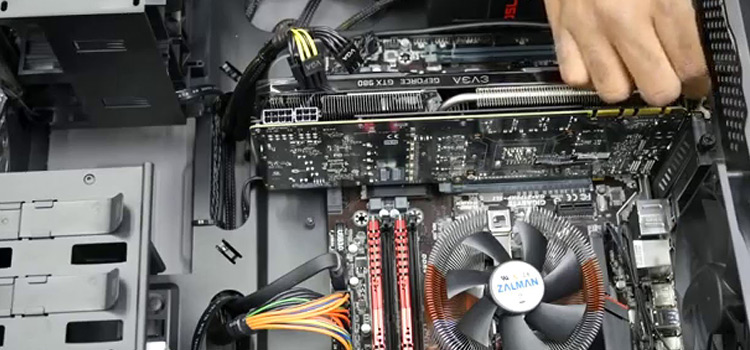The Risks of Modified Cars
Car modifications have always been a staple in the automotive world, attracting enthusiasts who want to personalize their vehicles for improved performance or unique aesthetics. While the prospect of modifying a car, such as a salvage Porsche 911, can be exciting, it’s crucial to understand the risks involved. This article delves into the various aspects of car modifications, outlining the potential pitfalls and considerations for car owners and fans.

Risks Associated with Performance Modifications
Performance modifications are highly popular among car enthusiasts, encompassing upgrades like engine tuning, turbocharging, and suspension enhancements. However, these modifications come with several risks:
1. Increased Wear and Tear: Performance parts often operate under higher stress, leading to accelerated wear and tear. This can result in more frequent maintenance and potentially costly repairs.
2. Voided Manufacturer Warranty: Many car manufacturers will void warranties if certain modifications are made. It’s essential to understand the implications of modifications on your vehicle’s warranty.
3. Reliability Issues: Enhanced performance can sometimes compromise the overall reliability of a vehicle, as modified parts are more prone to failures.
4. Insurance Implications: Modified vehicles are often considered high risk by insurance companies, leading to increased premiums or even refusal of coverage.
Aesthetic Modifications and Their Risks
Aesthetic modifications can significantly alter a vehicle’s appearance, from custom paint jobs to body kits and interior customizations. While these changes can be visually striking, they come with their own set of risks:
1. Safety Concerns: Some modifications can impact a vehicle’s safety and handling, especially if not installed professionally.
Besides installation issues, certain changes might fundamentally alter how a car reacts under certain driving conditions. Lowering a vehicle’s suspension, for example, might increase cornering performance but limit the car’s ability to absorb road imperfections, resulting in a rougher ride and potentially harming stability. Similarly, changes to the car’s weight distribution or aerodynamics might have unforeseen repercussions for braking and maneuverability. Car owners must evaluate these aspects and seek competent guidance to ensure that safety is not jeopardized in the quest for aesthetic or performance gains.
2. Legal Issues: Car modifications are subject to regulations, and illegal modifications can result in fines or other legal consequences.
Drivers with unlawfully modified vehicles may face more severe penalties, such as termination of their vehicle registration or, in extreme situations, impoundment. These legal constraints vary greatly by area and can include prohibitions on exhaust modifications, window tinting, and even specific types of lights or body kits. Car owners must be knowledgeable about local legal requirements and constraints. This not only helps to avoid legal issues but also keeps the vehicle insurable and roadworthy. Regular reviews and conversations with legal specialists or local automobile modification communities can help you navigate these complex restrictions.
3. Resale Value Impact: While certain modifications may appeal to specific buyers, they can often reduce the overall resale value of the car.
This drop in value is mostly because modified cars appeal to a narrow market, and finding a buyer with similar tastes can be difficult. Furthermore, prospective purchasers may be apprehensive about the quality of the renovations as well as the possibility of additional maintenance expenditures. Too personalized or excessive modifications can be off-putting to the average automobile customer, who may prefer a vehicle in its original, factory state. If you’re thinking about reselling your home in the future, it’s best to keep changes minimal or readily reversed. Keeping the original parts to reinstall before selling can also assist in keeping the vehicle’s resale value high.
4. Quality and Fitment Issues: Aftermarket aesthetic parts may not match the quality or fitment of original parts, leading to potential issues and detracting from the vehicle’s integrity.
Another significant factor is the compatibility of aftermarket items with the vehicle’s existing systems. In some circumstances, these parts may require extra modifications or adaptations to fit adequately, introducing additional complications and potential failure spots. Furthermore, the longevity and durability of aftermarket components can differ greatly from that of OEM parts, perhaps resulting in more frequent replacements or repairs. This discrepancy can influence not just the vehicle’s performance but also its safety if crucial components such as the brakes or suspension are implicated. Car owners should conduct extensive research and select high-quality aftermarket components, preferably with positive reviews and an established track record, to guarantee they closely match the vehicle’s specs and retain the vehicle’s overall integrity.
Engine and Mechanical Modifications: A Delicate Balance
Modifying a car’s engine and mechanical components is a delicate balance between enhancing performance and managing the associated risks:
1. Engine Strain: More power means more strain on the vehicle’s components, which can lead to mechanical failures.
This extra strain affects not only the engine but also the entire powertrain, including the transmission, axles, and differential. Components built for a specific power level may not be able to handle the increased torque and horsepower, resulting in premature wear or even catastrophic failure. When faced with the demands of a substantially more powerful engine, for example, a normal clutch may slip more frequently or fail sooner. Similarly, brakes that were acceptable for a stock car may no longer provide appropriate stopping force following considerable performance upgrades. Those considering engine improvements should also consider upgrading other associated components to manage the increased power, ensuring that the vehicle remains reliable and safe to drive.
2. Emission Standards: Engine mods can affect emissions, potentially making the car non-compliant with environmental regulations.
3. Fuel Efficiency: Enhanced performance typically reduces fuel efficiency, increasing running costs.
The decrease in fuel efficiency is frequently caused by the engine using more fuel to achieve the increased power. Larger turbochargers, performance camshafts, and aggressive engine tuning can all result in a more fuel-hungry engine. This higher gasoline usage can have a considerable impact on the vehicle’s overall cost of ownership, particularly for people who drive frequently or over long distances. Furthermore, the type of fuel required can vary; high-performance engines may demand higher octane fuel, which is usually more expensive. Before making significant performance changes, car owners should examine these issues and determine the long-term impact on their budget.
4. Complexity in Maintenance: Modified engines often require specialized maintenance, which can be more expensive and complex than standard care.
Modifying a car, whether it’s a high-performance vehicle or a more common model, can be a deeply rewarding experience. However, it’s vital to approach these modifications with a clear understanding of the risks involved. This includes considering the impact on insurance, legalities, and the overall health and safety of the vehicle. By being informed and cautious, car enthusiasts can enjoy the benefits of car modifications while mitigating the associated risks.
Subscribe to our newsletter
& plug into
the world of technology





